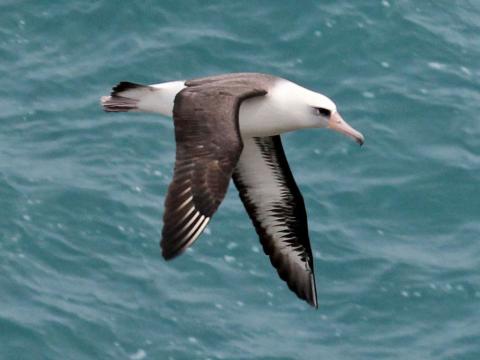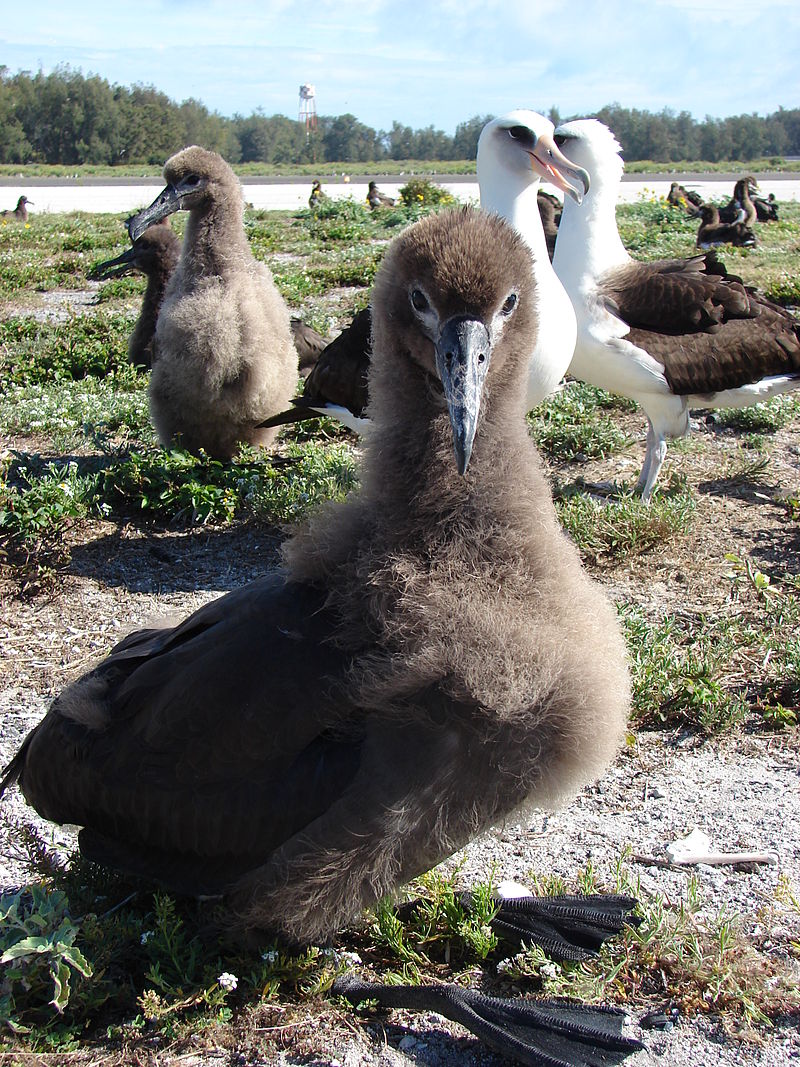
Many of the 22 species of Albatrosses are threatened with extinction. The greatest threat is commercial fishing: albatrosses get hooked when they dive to steal bites from a fishing boat’s baited hooks. Other threats include loss of breeding habitat and introduced predators on land. At sea they eat or become tangled up in plastic. Ingesting plastic leads to death in birds that mistake plastic for food floating in the ocean. Oil spills damage their insulating feathers; and climate change disrupts their feeding strategy, causing them to have to travel longer distances to find food.
The Laysan albatross, one of the most threatened species, is found mainly on the Hawaiian Islands. Like all albatrosses, they nest on the ground, a dangerous place if there are human activities and introduced predators, like cats, rats and mongoose. Conservationist biologists have found two ingenious ways to protect the birds. The first is to establish a new safe nesting site. They attract the wild birds to the new nesting area by using decoy birds and sounds to lure them. At a wildlife refuge on Oahu it took only three years for the first birds to arrive to start a new breeding colony.
The second method is to move eggs from a dangerous nesting site to a safer place. Scientists in Hawaii moved Laysan eggs from an airfield on Kauai to that same refuge on Oahu. The eggs were incubated and, when the chicks hatched, they were placed with adult albatrosses so they could imprint on the correct species. They were then handfed until fledging. In 2018 conservationists are celebrating the return of the first of those chicks to the refuge after spending three years at sea.
Additional Resources:
Read more about the translocation project.
The Monterey Bay Aquarium on plastic pollution and albatross.
More about the Laysan.
















